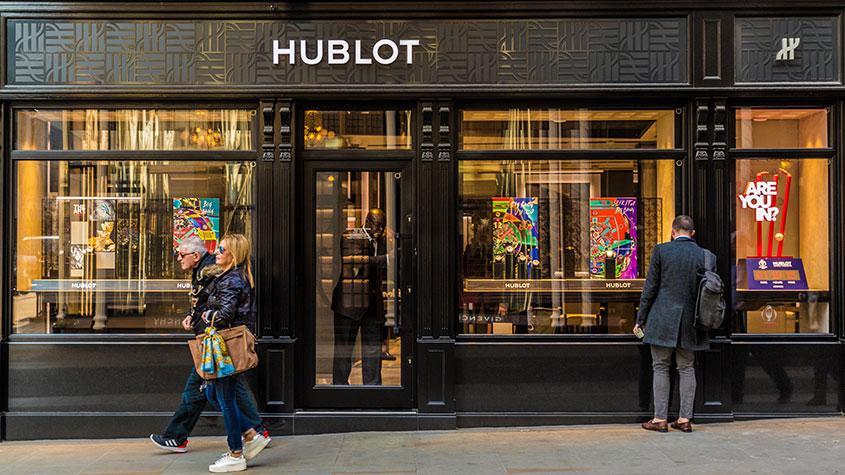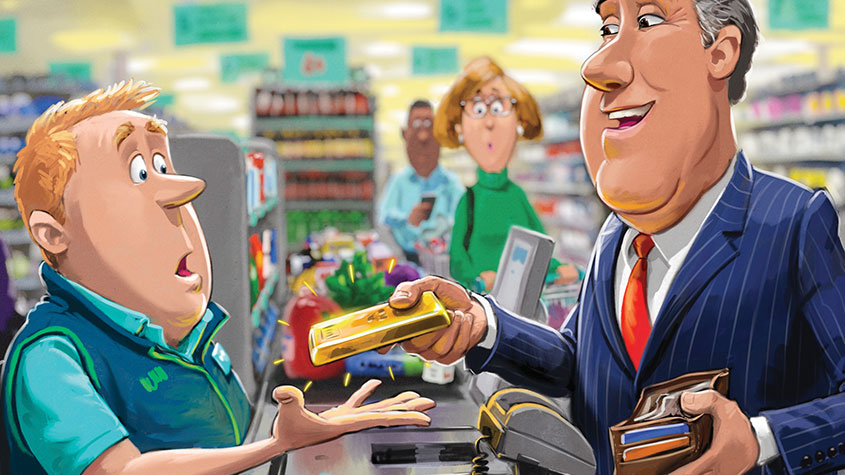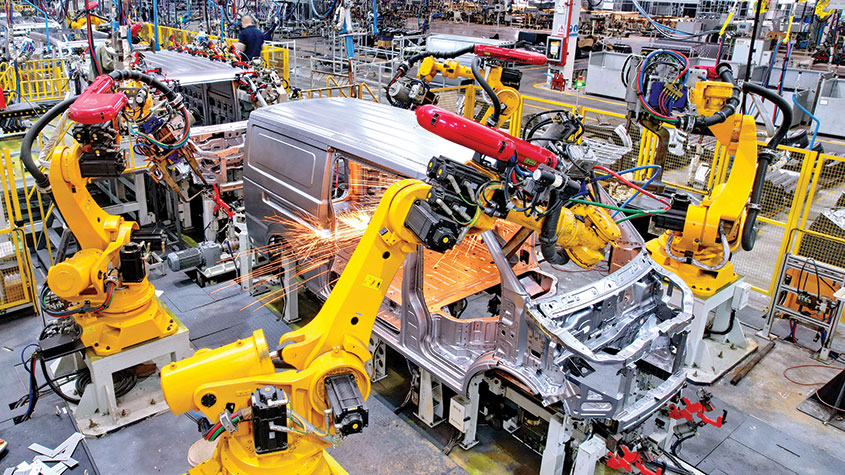Look beyond profits to find firms that will go the distance
When times are tough, a strong balance sheet is crucial if companies are to keep ticking over and bounce back. Richard Beddard explains the basics and highlights some promising companies to consider buying now.


In March, as the lockdown began, companies fell over themselves to let us know that sales and profits were set to slide – but their balance sheets were strong. No wonder. When profits are rolling in, executives and investors often pay balance sheets scant attention. But when earnings dry up, the balance sheet becomes crucial. A strong one can save a business from oblivion.
A company’s balance sheet, or as it is officially known, the statement of financial position, sets out what a company owns (its assets ) and what it owes (a reflection of how the assets are financed) on a particular date. All assets must be financed, so the two sides of the balance sheet balance.
A beginner’s guide
A company typically publishes its balance sheet quarterly or semi-annually, so its financial position can change significantly between updates, particularly if it is a seasonal business or the economic backdrop has changed. Although the pandemic has closed many businesses and severely affected others, most published balance sheets have yet to reveal the scars because many companies had just reported their results for the full year as we went into lockdown; regulators have also given others six more months to report. For now, all we can gauge by looking at most balance sheets is whether a firm went into the financial crisis in a strong position.
MoneyWeek
Subscribe to MoneyWeek today and get your first six magazine issues absolutely FREE

Sign up to Money Morning
Don't miss the latest investment and personal finances news, market analysis, plus money-saving tips with our free twice-daily newsletter
Don't miss the latest investment and personal finances news, market analysis, plus money-saving tips with our free twice-daily newsletter
The financing side of the balance sheet includes liabilities, which, like bank debt, often attract charges – usually interest – and must at some point be repaid. There is another form of funding however: equity, money given to the business by shareholders in perpetuity. Although shareholders can sell shares to other investors, a company is under no obligation to repay equity. Companies that finance most of their assets with liabilities are said to have weak balance sheets. If they start earning less money they may be unable to pay interest on debt or other obligations, such as payables, money owed to suppliers. Conversely, companies funded mostly by equity are said to have strong balance sheets because shareholders cannot demand repayment if the firm gets into trouble. This gives them breathing room when things get rough.
The story of a company
A balance sheet bears the triumphs and scars of a corporate lifetime because a company’s financial position today is the cumulative total of countless transactions since it was formed. In a successful company, retained profit will tend to be the biggest source of equity funding: this is profit earned by the business since its inception that has not been returned to shareholders. Some of it may well be earmarked for dividends, but the rest will have been invested to earn more profit or saved for a rainy day. Renowned US fund manager Peter Lynch judged a company’s balance sheet by comparing the amount of debt to the amount of equity. He said: “A normal corporate balance sheet has 75% equity and 25% debt... An even stronger balance sheet might have 1% debt and 99% equity. A weak [one] might have 80% debt and 20% equity.”
Debt comes in many forms, though, and it is wise to include them all. Back in 2008, rental obligations were not considered a form of debt by accountants and many investors simply ignored them. That’s changing today, and we are mid-way through the implementation of new regulations that require rental obligations to be counted as borrowings.
Don’t overlook payables and pension funds
Payables are often overlooked too. In good times companies that use suppliers as a form of funding are thought to be efficient because there is no associated interest cost but in a crisis, as SCS’s story on page 20 highlights, a company may not have the money to pay them. A similar reliance on outside capital probably explains the tussle between airlines and their customers over refunds for flights cancelled due to the pandemic. As with the sofa industry, customers pay upfront for flights, but if the airline cannot fly, it must refund the money. So customers too can be an unreliable source of finance.
Some companies, moreover, still operate final-salary pension schemes. If they are to remain adequately funded, any deficit must be filled over time. This creates yet another obligation. The returns a company can generate from the assets listed on its balance sheet also matter. Highly profitable companies are less likely to run out of money because they can sustain a bigger drop in revenue before they make losses. Their creditors are more likely to be lenient in tough times, mindful that when circumstances improve they should make lots of money to repay them.
Finally, the quality of the assets on the balance sheet also affects our perception of its strength. Cash is king, but most other assets can be worth less than their stated values when a company hits the skids. If managers decide their assets are impaired (worth less), they “write down”, or reduce their value. To keep the balance sheet balanced, they must also reduce retained profit and therefore equity, which increases the firm’s reliance on liabilities. Balance sheets stacked with intangible assets are most at risk because they are impossible to value accurately. Typically, intangible assets represent the value of acquisitions a company has made. When deciding how much to pay for another firm, an acquirer will estimate the returns it expects to make from it. Almost by definition, though, a company in trouble is not making adequate returns, the intangible assets will not be living up to expectations, a writedown may be coming, and debt will loom larger compared to its reduced assets.
Cimpress and 4imprint: comparing two rivals
A closer look at the balance sheets of two companies in the same sector helps elucidate these concepts. Outwardly, 4imprint and Cimpress are similar businesses. Their origins lie in print, business cards and brochures. Although these products are still the mainstay of Vistaprint, Cimpress’ biggest division, Cimpress has diversified into promotional goods: customised T-shirts, mugs, and computer peripherals, for example. That has brought it into direct competition with 4imprint, which has specialised in promotional goods for years.
4imprint incubated the direct sales channel, which has now been its only business for two decades. It connects corporate buyers with a network of suppliers that customise blank products. 4imprint barely gets involved in customisation or logistics; its focus is on running the network, placing orders on behalf of clients that are customised and shipped by suppliers. Cimpress, however, has spent a decade acquiring other print and customisation firms. It thinks that to drive down the cost of mass customisation it must own the suppliers. Its competitive advantage is its “mass customisation platform”, the technology that does the work. Both businesses earn high returns on capital and have grown at similar rates in recent years. It will be fascinating to see which of them is more successful in the years ahead, but judging by the past enshrined in their balance sheets, there is only one winner – and it is 4imprint.
Why 4imprint is stronger
The asset side of 4imprint’s latest balance sheet is dominated by current assets, cash and assets the company expects to turn into cash within a year: receivables (money owed by customers, primarily) and stock. Intangible assets made up less than 1% of total assets. Funding is split, 45% equity and 55% liabilities, so 4imprint’s balance sheet is not the strongest. However most of its liabilities are payables. It has no bank debt and a modest pension deficit.
Like a homeowner whose house has declined in value to a level below the purchase price, Cimpress is in negative equity. Retained profit is negative, meaning that cumulatively Cimpress has made a loss. Negative equity also means Cimpress’ liabilities are greater than its assets. According to its most recent balance sheet borrowings alone were 92% of total assets, and there is little comfort to be found on the other side of the balance sheet. Intangible assets were 45% of the total.
Promotional goods are worn by workers, or given to customers at exhibitions. They’re meant to be seen at gatherings, or adorn office desks. During lockdown, 4imprint reported an 80% year-on-year drop in orders. For both companies, such conditions are unprecedented. Further waves of the pandemic and a slow economic recovery would be damaging too. The upshot, however, is that 4imprint shareholders are likely to be sleeping more easily.
Shares in 4imprint are down by 31% from their pre-pandemic highs. Still, at £24 the stock is still trading on a debt-adjusted price/earnings (p/e) ratio of 18. Investors have not given up on high-quality businesses with strong balance sheets even where trading has been walloped. Finding undervalued shares with strong balance sheets that are trading reasonably well is even trickier. Perhaps trading is improving at 4imprint: two non-executive directors added substantially to their holdings at the end of May.
Five companies with strong balance sheets
| Anpario (ANP) | 31/12/19 | 84 | 88% | 34% | 19 |
| Bloomsbury Publishing (BMY) | 29/2/20 | 174 | 65% | 7% | 14 |
| D4T4 (D4T4) | 30/9/19 | 80 | 81% | 38% | 21 |
| Quartix (QTX) | 31/12/19 | 188 | 67% | 24% | 33 |
| Tracsis (TRCS) | 31/1/20 | 176 | 64% | 31% | 18 |
| Trailing 12-month data. Source: SharePad, 29/5/20 |
Anpario: securing the food supply
Cash-rich Anpario (Aim: ANP) makes natural animal-feed additives – alternatives to antibiotic growth promoters, which are banned or discouraged around the world. Revenue growth has been subdued in recent years as the company has sloughed off less profitable contract manufacturing and an organic animal feed business, but profit growth has been respectable.
The company’s prospects may improve as it takes more control of distribution in key markets. Meanwhile, securing the food supply has been a priority for governments during the pandemic, meaning more money for farmers to spend on feed.
Bloomsbury Publishing: moving online
Bloomsbury (LSE: BMY) reported almost £32m of cash at its year end in February, but it has since issued and sold more shares to ensure it can continue paying advances to authors. The company remains most famous for publishing the Harry Potter books, routinely among its top selling titles, but it has experienced a slump in demand for printed books owing to the closure of bookshops. For a decade Bloomsbury has been nurturing an academic and professional division which is growing rapidly and profitably. The company is knitting these titles together into digital collections, an initiative that moved into profit in the year to February 2020.
D4T4: capturing data
D4T4 (Aim: D4T4) helps companies capture, manage, and analyse their data. It sells software and hardware, including its own patented software, Celebrus, which captures consumers’ behaviour when they use websites and apps, and feeds the data to a company’s other systems in real time. Celebrus allows business systems to react “in the moment”, tailoring messages and detecting fraud.
Although D4T4’s capabilities are applicable to a wide range of industries, it has established a reputation in banking and finance, sectors which so far have been fairly resilient. The company has declared that revenue and profit for the year just ended will be lower, however, as customers switch from perpetual licences to subscriptions. This will depress profit until D4T4 builds up its installed base.
Quartix: growth prospects at a reasonable price
If small businesses suffer, Quartix (Aim: QTX) does too. It supplies a vehicle tracking service to small fleet owners for a monthly fee. A generic device that can be self-installed relays the locations of their vehicles and how they are being driven in real-time through configurable software. Quartix’s superpower is keeping the cost of selling and delivering the system down, which is why it is a very popular tracking system for money conscious smaller businesses in the UK, and growing subscriptions rapidly in Europe and the US.
Quartix also supplies insurance companies, but its gradual withdrawal from this lower-margin market has tempered revenue growth in recent years and perhaps hidden the appeal of the fleet business from some investors. The group believes it can emerge from 2021 with its £8.5m cash surplus intact.
Tracsis: a serial acquirer with a strong balance sheet
Tracsis (Aim: TRCS) is the product of around 15 acquisitions since it spun out of the University of Leeds’ computing department in 2004. The businesses supply other firms and government bodies in the transport sector with software, hardware and services. Rail software and technology is the jewel in the crown, earning the bulk of profit.
The road division, on the other hand, is harder to like because it relies more on services such as traffic surveys and event parking, which earn lower margins and next to none during lockdowns. Nevertheless, like all the companies featured here, Tracsis has a highly profitable past, and its formidable position as a supplier to rail companies has been underlined by new multi-million pound orders in May.
Will a beefed-up balance sheet save sofa seller SCS?
When we’re insecure about our incomes we’ll put up with tatty upholstery rather than buy an expensive new three-piece suite. As the economy sagged during the financial crisis of 2007-2008, so did our sofas, with sales at SCS Upholstery, a chain of soft furnishings retailers, slumping by 15% year-on-year in the six months to January 2008.
Profit is the difference between revenue and costs, and because the company made relatively little money on each sofa sale before the crisis hit, and the costs of running shops and warehouses are mostly fixed in the short-term, SCS was now selling sofas at a loss. In six months it lost £8.5m. When the company reported its results in March 2008, it may not have looked as though it was in trouble, but it was.
The balance sheet showed cash of £15m in January and no bank debt. But payables, the money SCS Upholstery owed its suppliers, sofa manufacturers, had ballooned from £33m to £49m. Essentially, the company was borrowing from suppliers to pay the rent and staff, and keep the lights on.
Companies cannot delay payments indefinitely, though. By May 2008, SCS Upholstery’s cash surplus had shrunk to below £5m. Sofa manufacturers also trading on thin margins had financed their businesses by borrowing, using invoices for furniture supplied to SCS Upholstery as collateral, a practice known as factoring.
Recognising the risk that the invoices might not be paid, the banks providing the finance required credit insurance, but in early June a prominent insurer withdrew cover and overnight, the use of suppliers as a source of finance dried up.
Suppliers demanded early payment on outstanding orders and on some orders that had yet to be fulfilled, which gobbled up SCS Upholstery’s remaining cash. The company’s bank refused to let it draw on an overdraft facility, and with that, SCS Upholstery had run out of financing options. Within a month it couldn’t pay the rent, and the administrators were called in.
There’s a happy ending to this salutary tale, although not for shareholders who lost everything. The bankrupt company was sold to Sun Capital Partners, a private equity firm, which plugged the funding black hole and returned SCS Upholstery to the stockmarket in 2015 as SCS Group. This time around, SCS may have learned from the financial crisis.
The SCS Upholstery of old, a low-margin business dependent on its suppliers for finance, had a weak balance sheet, even though it had no bank borrowings.
In its new form, SCS has weathered the first stage of the pandemic. At the end of May, it reopened stores in England, although stores in Scotland and Wales remained closed. However, we’re only in the early phase of the recession. Investors will take some comfort from the fact that unlike 12 years ago, SCS successfully drew on its £12m borrowing facility, which gives it £48m in cash (as of 25 May) to act as a cushion against poor trading. According to the paperwork accompanying SCS’s flotation, this time it is less reliant on suppliers who in turn rely on credit insurance. SCS has a stronger balance sheet, although only time will tell if it is strong enough.
Get the latest financial news, insights and expert analysis from our award-winning MoneyWeek team, to help you understand what really matters when it comes to your finances.
Richard Beddard founded an investment club before joining Interactive Investor as an editor at the height of the dotcom boom in 1999. in 2007 he started the Share Sleuth column for Money Observer magazine, which tracks a virtual portfolio of shares selected for the long-term by Richard. His career highlights include interviewing Nobel prize winners, private investors and many, many company executives.
Richard is freelance writer who invests in company shares and funds through his self-invested personal pension. He has worked as a teacher and in educational publishing, and is a governor at University Technology College, Cambridge. He supports the Livingstone Tanzania Trust, a charity supporting education and enterprise in Tanzania.
Richard studied International History and Politics at the University of Leeds, winning the Drummond-Wolff Prize for "distinguished work in the field of international relations".
-
 Why pension transfers are so tricky
Why pension transfers are so trickyInvestors could lose out when they do a pension transfer, as the process is fraught with risk and requires advice, says David Prosser
-
 The political economy of Clarkson’s Farm
The political economy of Clarkson’s FarmOpinion Clarkson’s Farm is an amusing TV show that proves to be an insightful portrayal of political and economic life, says Stuart Watkins
-
 Invest in space: the final frontier for investors
Invest in space: the final frontier for investorsCover Story Matthew Partridge takes a look at how to invest in space, and explores the top stocks to buy to build exposure to this rapidly expanding sector.
-
 Invest in Brazil as the country gets set for growth
Invest in Brazil as the country gets set for growthCover Story It’s time to invest in Brazil as the economic powerhouse looks set to profit from the two key trends of the next 20 years: the global energy transition and population growth, says James McKeigue.
-
 5 of the world’s best stocks
5 of the world’s best stocksCover Story Here are five of the world’s best stocks according to Rupert Hargreaves. He believes all of these businesses have unique advantages that will help them grow.
-
 The best British tech stocks from a thriving sector
The best British tech stocks from a thriving sectorCover Story Move over, Silicon Valley. Over the past two decades the UK has become one of the main global hubs for tech start-ups. Matthew Partridge explains why, and highlights the most promising investments.
-
 Could gold be the basis for a new global currency?
Could gold be the basis for a new global currency?Cover Story Gold has always been the most reliable form of money. Now collaboration between China and Russia could lead to a new gold-backed means of exchange – giving prices a big boost, says Dominic Frisby
-
 How to invest in videogames – a Great British success story
How to invest in videogames – a Great British success storyCover Story The pandemic gave the videogame sector a big boost, and that strong growth will endure. Bruce Packard provides an overview of the global outlook and assesses the four key UK-listed gaming firms.
-
 How to invest in smart factories as the “fourth industrial revolution” arrives
How to invest in smart factories as the “fourth industrial revolution” arrivesCover Story Exciting new technologies and trends are coming together to change the face of manufacturing. Matthew Partridge looks at the companies that will drive the fourth industrial revolution.
-
 Why now is a good time to buy diamond miners
Why now is a good time to buy diamond minersCover Story Demand for the gems is set to outstrip supply, making it a good time to buy miners, says David J. Stevenson.
